A Quick Guide to Big-O Notation, Memoization, Tabulation, and Sorting Algorithms by Example
Curating Complexity: A Guide to Big-O Notation
A Quick Guide to Big-O Notation, Memoization, Tabulation, and Sorting Algorithms by Example
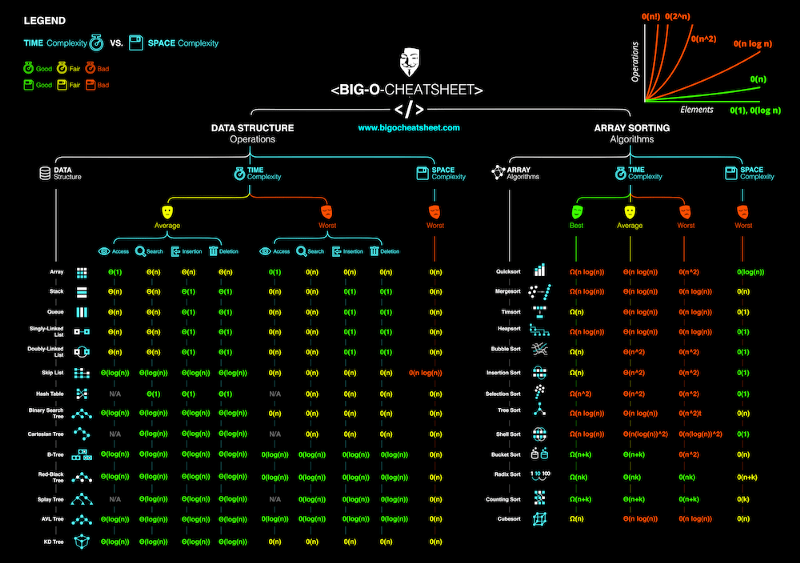 Curating Complexity: A Guide to Big-O Notation
Curating Complexity: A Guide to Big-O Notation
Medium-article-comp-complex
A Node.js repl by bgoonzreplit.com
- Why is looking at runtime not a reliable method of calculating time complexity?
- Not all computers are made equal( some may be stronger and therefore boost our runtime speed )
- How many background processes ran concurrently with our program that was being tested?
- We also need to ask if our code remains performant if we increase the size of the input.
- The real question we need to answering is:
How does our performance scale?.
big ‘O’ notation
- Big O Notation is a tool for describing the efficiency of algorithms with respect to the size of the input arguments.
- Since we use mathematical functions in Big-O, there are a few big picture ideas that we’ll want to keep in mind:
- The function should be defined by the size of the input.
SmallerBig O is better (lower time complexity)- Big O is used to describe the worst case scenario.
- Big O is simplified to show only its most dominant mathematical term.
Simplifying Math Terms
- We can use the following rules to simplify the our Big O functions:
Simplify Products: If the function is a product of many terms, we drop the terms that don't depend on n.Simplify Sums: If the function is a sum of many terms, we drop the non-dominant terms.n: size of the inputT(f): unsimplified math functionO(f): simplified math function.
Putting it all together
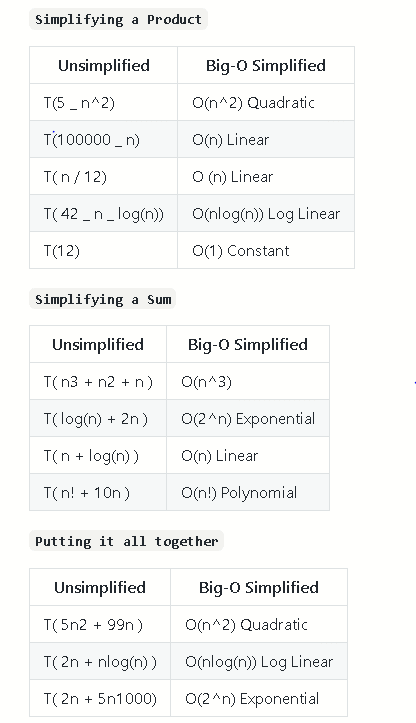 - First we apply the product rule to drop all constants.
- First we apply the product rule to drop all constants.
- Then we apply the sum rule to select the single most dominant term.
Complexity Classes
Common Complexity Classes
There are 7 major classes in Time Complexity
The algorithm takes roughly the same number of steps for any input size.
O(log(n)) Logarithmic
In most cases our hidden base of Logarithmic time is 2, log complexity algorithm’s will typically display ‘halving’ the size of the input (like binary search!)
O(n) Linear
Linear algorithm’s will access each item of the input “once”.
O(nlog(n)) Log Linear Time
Combination of linear and logarithmic behavior, we will see features from both classes.
Algorithm’s that are log-linear will use both recursion AND iteration.
O(nc) Polynomial
C is a fixed constant.
O(c^n) Exponential
C is now the number of recursive calls made in each stack frame.
Algorithm’s with exponential time are VERY SLOW.
Memoization
- Memoization : a design pattern used to reduce the overall number of calculations that can occur in algorithms that use recursive strategies to solve.
- MZ stores the results of the sub-problems in some other data structure, so that we can avoid duplicate calculations and only ‘solve’ each problem once.
- Two features that comprise memoization:
- FUNCTION MUST BE RECURSIVE.
- Our additional Data Structure is usually an object (we refer to it as our memo… or sometimes cache!)
Our memo object is mapping out our arguments of factorial to it’s return value.
- Keep in mind we didn’t improve the speed of our algorithm.
Memoizing Fibonacci
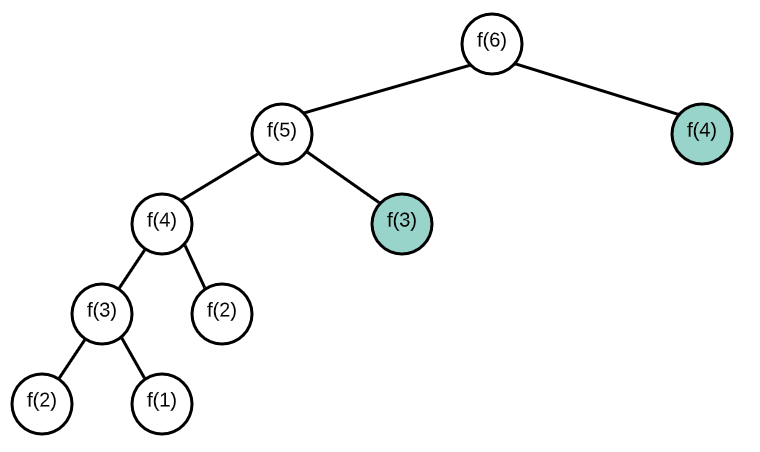
The Memoization Formula
Rules:
- Write the unoptimized brute force recursion (make sure it works);
- Add memo object as an additional argument .
- Add a base case condition that returns the stored value if the function’s argument is in the memo.
- Before returning the result of the recursive case, store it in the memo as a value and make the function’s argument it’s key.
Things to remember
- When solving DP problems with Memoization, it is helpful to draw out the visual tree first.
- When you notice duplicate sub-tree’s that means we can memoize.
Tabulation
Tabulation Strategy
Use When:
- The function is iterative and not recursive.
- The accompanying DS is usually an array.
Steps for tabulation
- Create a table array based off the size of the input.
- Initialize some values in the table to ‘answer’ the trivially small subproblem.
- Iterate through the array and fill in the remaining entries.
- Your final answer is usually the last entry in the table.
Memo and Tab Demo with Fibonacci
Normal Recursive Fibonacci
function fibonacci(n) {
if (n <= 2) return 1;
return fibonacci(n - 1) + fibonacci(n - 2);
}
Memoization Fibonacci 1
Memoization Fibonacci 2
Tabulated Fibonacci
Example of Linear Search
- Worst Case Scenario: The term does not even exist in the array.
- Meaning: If it doesn’t exist then our for loop would run until the end therefore making our time complexity O(n).
Sorting Algorithms
Bubble Sort
Time Complexity: Quadratic O(n^2)
- The inner for-loop contributes to O(n), however in a worst case scenario the while loop will need to run n times before bringing all n elements to their final resting spot.
Space Complexity: O(1)
- Bubble Sort will always use the same amount of memory regardless of n.
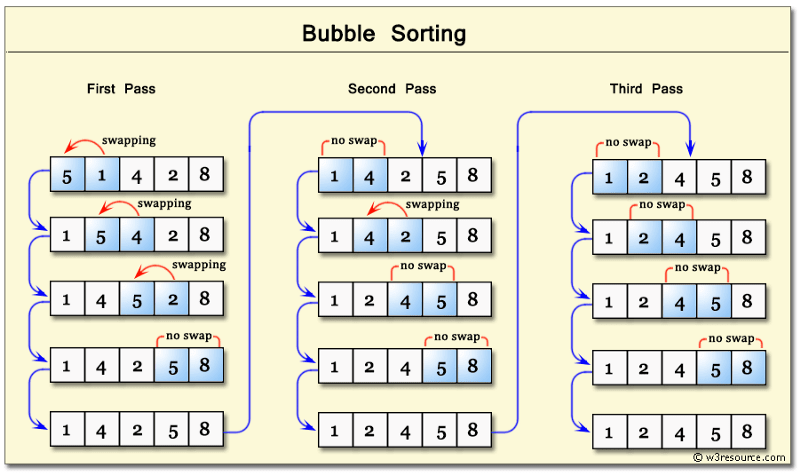
- Gives an intro on how to convert unsorted data into sorted data.
It’s almost never used in production code because:
- It’s not efficient
- It’s not commonly used
- There is stigma attached to it
Bubbling Up: Term that infers that an item is in motion, moving in some direction, and has some final resting destination.- Bubble sort, sorts an array of integers by bubbling the largest integer to the top.
- Worst Case & Best Case are always the same because it makes nested loops.
- Double for loops are polynomial time complexity or more specifically in this case Quadratic (Big O) of: O(n²)
Selection Sort
Time Complexity: Quadratic O(n^2)
- Our outer loop will contribute O(n) while the inner loop will contribute O(n / 2) on average. Because our loops are nested we will get O(n²);
Space Complexity: O(1)
- Selection Sort will always use the same amount of memory regardless of n.
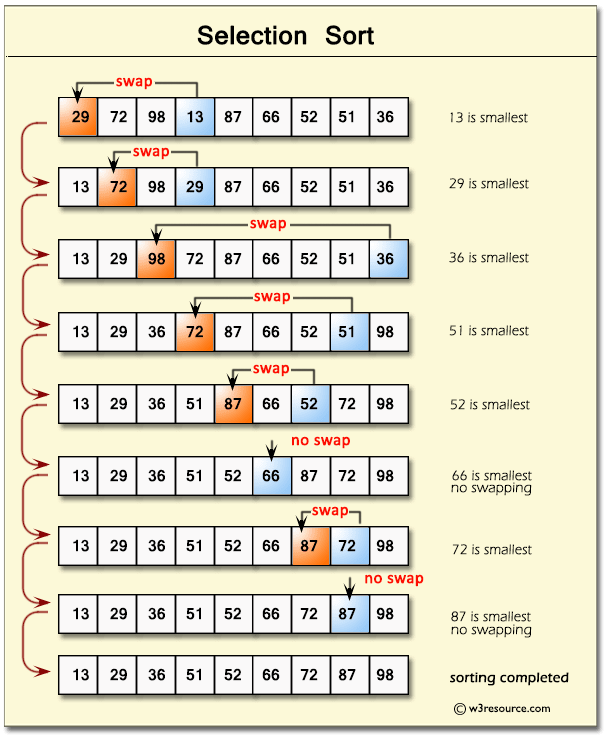
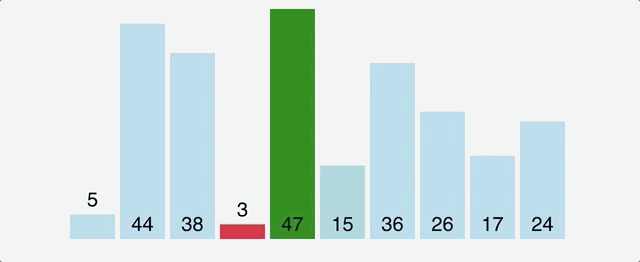
- Set MIN to location 0
- Search the minimum element in the list.
- Swap with value at location Min
- Increment Min to point to next element.
- Repeat until list is sorted.
Insertion Sort
Time Complexity: Quadratic O(n^2)
- Our outer loop will contribute O(n) while the inner loop will contribute O(n / 2) on average. Because our loops are nested we will get O(n²);
Space Complexity: O(n)
- Because we are creating a subArray for each element in the original input, our Space Comlexity becomes linear.
Time Complexity: Log Linear O(nlog(n))
- Since our array gets split in half every single time we contribute O(log(n)). The while loop contained in our helper merge function contributes O(n) therefore our time complexity is O(nlog(n));
Space Complexity: O(n) - We are linear O(n) time because we are creating subArrays.

- We need a function for merging and a function for sorting.
Steps:
- If there is only one element in the list, it is already sorted; return the array.
- Otherwise, divide the list recursively into two halves until it can no longer be divided.
- Merge the smallest lists into new list in a sorted order.
Quick Sort
Time Complexity: Quadratic O(n^2)
- Even though the average time complexity O(nLog(n)), the worst case scenario is always quadratic.
Space Complexity: O(n)
- Our space complexity is linear O(n) because of the partition arrays we create.
- QS is another Divide and Conquer strategy.
- Some key ideas to keep in mind:
- It is easy to sort elements of an array relative to a particular target value.
- An array of 0 or 1 elements is already trivially sorted.
Time Complexity: Log Time O(log(n))
Space Complexity: O(1)
Min Max Solution
- Must be conducted on a sorted array.
- Binary search is logarithmic time, not exponential b/c n is cut down by two, not growing.
- Binary Search is part of Divide and Conquer.
Insertion Sort
- Works by building a larger and larger sorted region at the left-most end of the array.
Steps:
- If it is the first element, and it is already sorted; return 1.
- Pick next element.
- Compare with all elements in the sorted sub list
- Shift all the elements in the sorted sub list that is greater than the value to be sorted.
- Insert the value
- Repeat until list is sorted.
If you found this guide helpful feel free to checkout my GitHub/gists where I host similar content:
bgoonz’s gists
Instantly share code, notes, and snippets. Web Developer, Electrical Engineer JavaScript | CSS | Bootstrap | Python |…gist.github.com
bgoonz — Overview
Web Developer, Electrical Engineer JavaScript | CSS | Bootstrap | Python | React | Node.js | Express | Sequelize…github.com
Or Checkout my personal Resource Site:
Web-Dev-Hub
Memoization, Tabulation, and Sorting Algorithms by Example Why is looking at runtime not a reliable method of…bgoonz-blog.netlify.app
Web-Dev-Hub
Memoization, Tabulation, and Sorting Algorithms by Example Why is looking at runtime not a reliable method of…bgoonz-blog.netlify.app








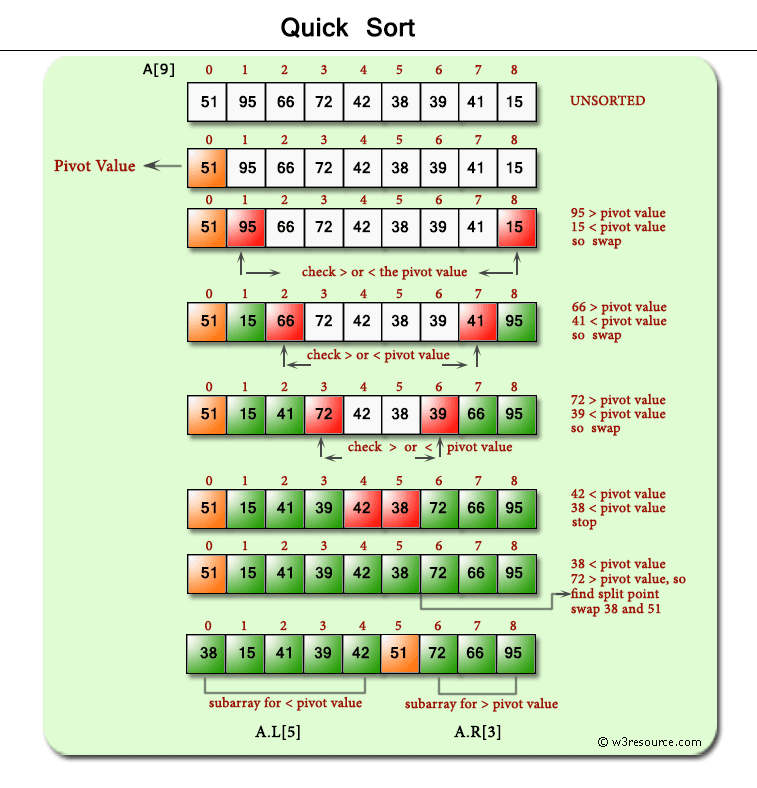

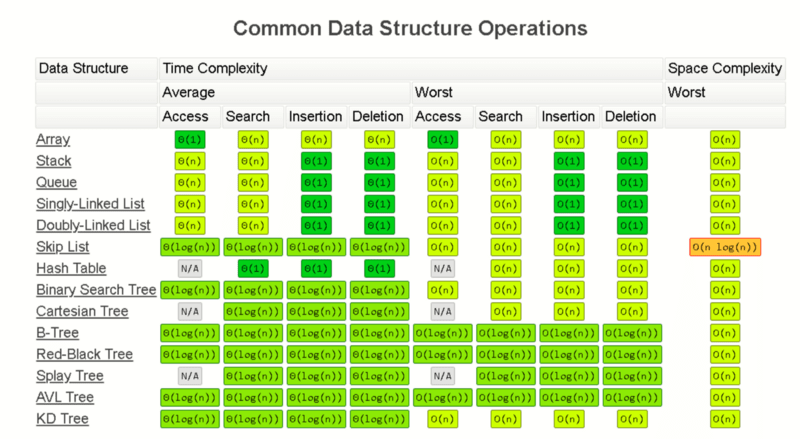





Top comments (0)